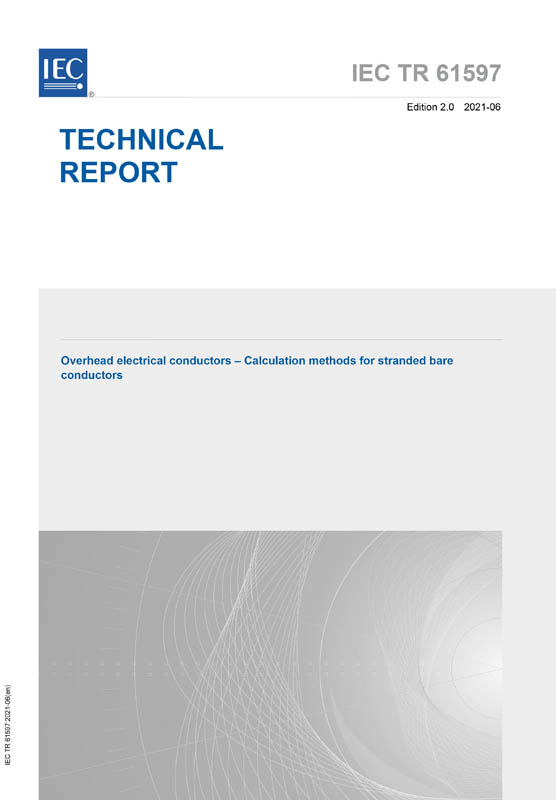IEC 61597:2021(E) which is a Technical Report provides information with regard to conductors specified in IEC 61089 and other aluminium and aluminium steel conductors. Such information includes properties of conductors and useful methods of calculation. The following chapters are included in this document.
– current carrying capacity of conductors: Calculation method and typical example
– alternating current resistance, inductive and capacitive reactances
– elongation of conductors: Thermal and stress-strain data
– conductor creep
– loss of strength of aluminium wires due to high temperatures
It is noted that this document does not discuss all theories and available methods for calculating conductor properties, but provides users with simple methods that provide acceptable accuracies.
This second edition cancels and replaces the first edition published in 1995. This edition constitutes a technical revision.
This edition includes the following significant technical changes with respect to the previous edition:
a) Addition of Clause 2 and Clause 3 since the “Normative references” and “Terms and definitions” clauses are mandatory elements of the text according to the new IEC template.
b) In Clause 6, addition of new kinds of aluminium alloy and aluminium clad steel and their values of temperature coefficients of resistance.
c) In Clause 6, addition of guidelines for the calculation of AC resistance taken into account hysteresis and eddy current losses.
d) In Clause 7, addition of the values of coefficient of linear expansion of aluminium alloy conductor aluminium-clad steel reinforced series.
e) Deletion of Clause 8 “Calculation of maximum conductor length on drums” in the last version.
f) Annex A, replaced by “A practical example of CCC calculation”.
g) Annex B, replaced by “Indicative conditions for CCC calculation”.


